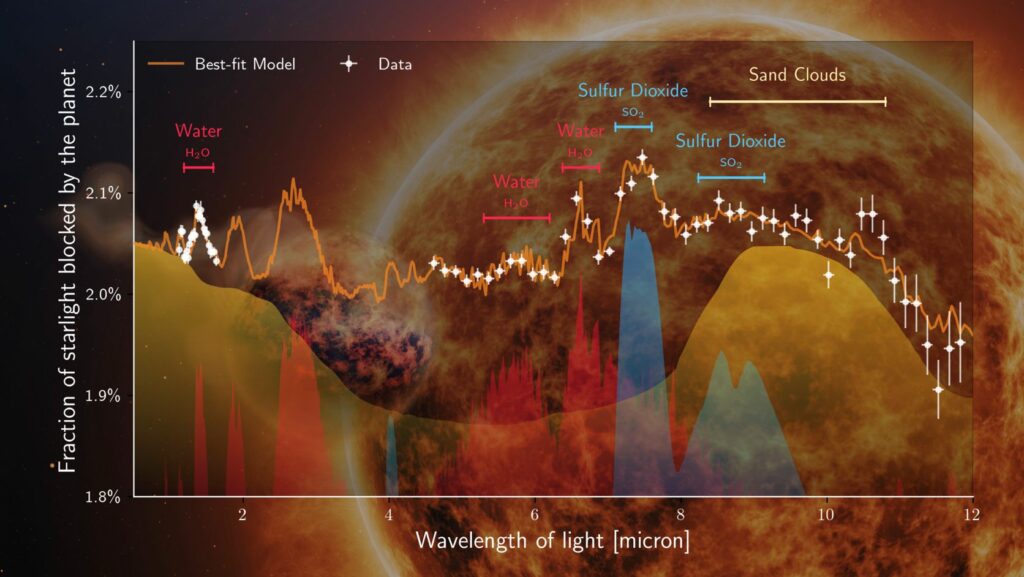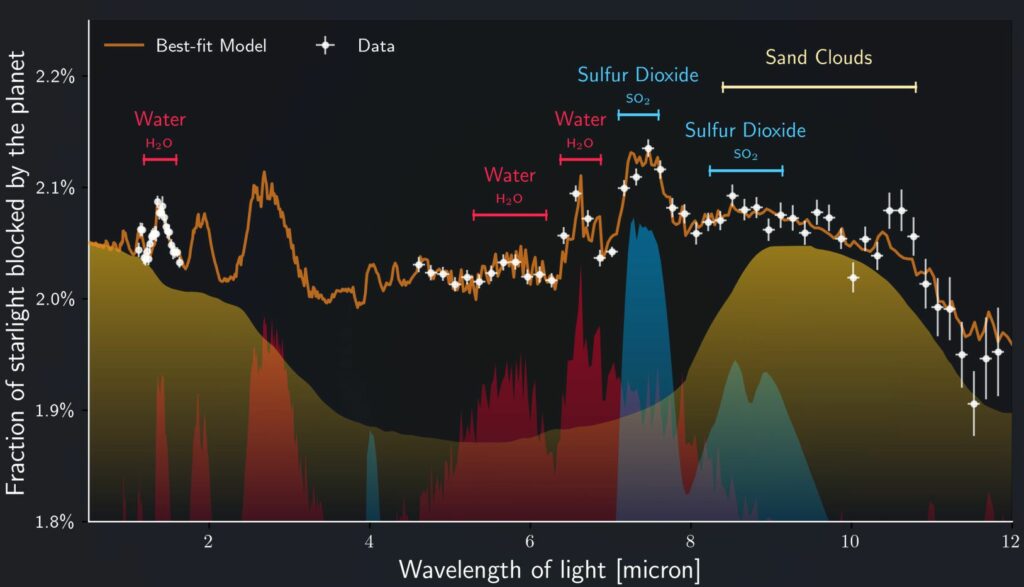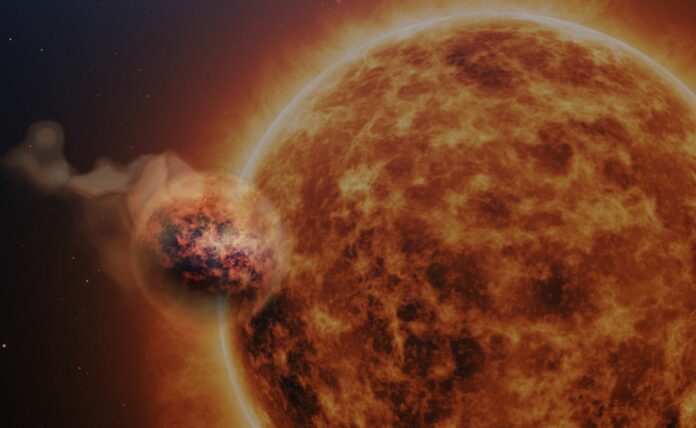WASP-107b whispers its secrets to JWST: its airy embrace holds water vapor and sulfur dioxide, with silicate clouds like desert mirages floating in its sky, defying previous predictions.
The James Webb Space Telescope (JWST) has made a groundbreaking discovery in the study of the exoplanet WASP-107b’s atmosphere, revealing a composition filled with water vapor and sulfur dioxide, alongside silicate clouds, reminiscent of terrestrial sand. However, methane, a common greenhouse gas, was noticeably absent.
A group of astronomers from Europe, with leadership including the Institute of Astronomy at KU Leuven, leveraged the latest data from the James Webb Space Telescope to probe the atmospheric conditions of WASP-107b, an exoplanet in close proximity to our solar system.
Their investigation into WASP-107b’s expansive atmosphere unveiled a combination of water vapor, sulfur dioxide, and even silicate sand clouds—elements that are part of a highly active atmospheric system with a substantial movement of materials.
International astronomers are utilizing the state-of-the-art Mid-Infrared Instrument (MIRI) on the JWST to undertake pioneering studies of exoplanets, which are celestial bodies orbiting stars beyond our solar milieu. WASP-107b stands out among these as a gaseous exoplanet with an orbit around a star that is cooler and smaller than the Sun.
Despite having a mass comparable to Neptune, WASP-107b boasts a larger volume, nearing Jupiter’s dimensions, giving it a notably less dense structure. This less dense or ‘fluffy’ quality of WASP-107b allows for an extraordinary depth of atmospheric investigation—up to 50 times greater than that possible for the larger gas giants in our own system like Jupiter.

This group of astronomers capitalized on the unique characteristics of WASP-107b to conduct an in-depth analysis of its atmosphere. The less-dense nature of the exoplanet’s atmosphere means that the signals or spectral features from its gases are more pronounced than they would be in denser atmospheres, like those of more massive planets.
Published in the prestigious journal Nature, their study has not only identified the presence of water vapor and sulfur dioxide but also silicate clouds. Interestingly, their research also highlights the notable absence of methane, a common greenhouse gas, in the planet’s atmosphere.
An Evolving Atmosphere
The recent observations of WASP-107b bring to light the intricate dynamics and chemistry of this fascinating exoplanet. Notably, the lack of methane in its atmosphere suggests the presence of a warmer interior, providing valuable insights into the planet’s thermal energy processes.
Additionally, the unexpected detection of sulfur dioxide (commonly associated with the smell of burnt matches) challenges previous assumptions. Updated climate models for WASP-107b’s atmosphere, taking into account its less dense nature, indicate a favorable environment for sulfur dioxide formation.
Despite the host star’s limited emission of high-energy photons, the ‘fluffy’ characteristic of the planet allows these photons to penetrate deeply, facilitating the necessary chemical reactions for sulfur dioxide production.
Furthermore, the study revealed that the signatures of sulfur dioxide and water vapor are less pronounced than they would be without atmospheric clouds. The presence of high-altitude clouds, composed of small silicate particles (akin to earthly sand), obscures these elements. This discovery is groundbreaking as it marks the first time astronomers can conclusively determine the chemical makeup of clouds on an exoplanet.
Prof. Leen Decin of KU Leuven, a lead researcher in the study, highlights the impact of JWST’s MIRI instrument, stating, “JWST is revolutionizing exoplanet characterization, providing unprecedented insights at remarkable speed. The discovery of clouds of sand, water, and sulfur dioxide on this fluffy exoplanet by JWST’s MIRI instrument is a pivotal milestone. It reshapes our understanding of planetary formation and evolution, shedding new light on our own Solar System.”

Unlike Earth, where water turns to ice at low temperatures, the atmosphere of gaseous planets like WASP-107b, with temperatures around 500 degrees Celsius, can support silicate cloud formation at higher altitudes. Traditional models anticipated these clouds to form in hotter, deeper layers of the atmosphere. However, observations suggest a continuous cycle akin to Earth’s water cycle, where sand droplets evaporate and recondense as silicate clouds at higher altitudes.
Dr. Michiel Min explains this phenomenon, “The fact that we see these sand clouds high up in the atmosphere must mean that the sand rain droplets evaporate in deeper, very hot layers, and the resulting silicate vapor is efficiently moved back up, where they recondense to form silicate clouds once more. This is very similar to the water vapor and cloud cycle on our own Earth but with droplets made of sand.”
New research not only enlightens us about the unique attributes of WASP-107b but also extends the frontiers of our knowledge regarding exoplanetary atmospheres. It signifies a crucial advancement in exploring exoplanets, unveiling the complex interactions of chemicals and climate on these distant celestial bodies.
Dr. Achrène Dyrek at CEA Paris, another lead author, comments, “JWST enables a deep atmospheric characterization of an exoplanet that does not have any counterpart in our Solar System, we are unraveling new worlds!”
Image Credit: Michiel Min / European MIRI EXO GTO team / ESA / NASA; Klaas Verpoest (LUCA School of Arts, Belgium)
